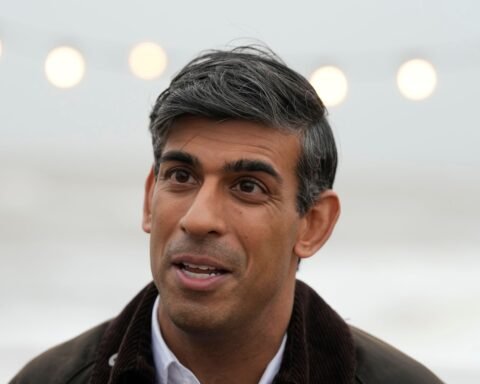 An outbreak of Ebola has emerged in the Democratic Republic of Congo, and hundreds could be affected, the World Health Organization (WHO) has confirmed. The risk assessment is high at a national level, medium at a regional level and currently low at a global level, said Peter Salama, WHO’s executive director for health emergencies, during a telephone briefing.
An outbreak of Ebola has emerged in the Democratic Republic of Congo, and hundreds could be affected, the World Health Organization (WHO) has confirmed. The risk assessment is high at a national level, medium at a regional level and currently low at a global level, said Peter Salama, WHO’s executive director for health emergencies, during a telephone briefing.
Three people have died out of about 20 suspected and confirmed Ebola cases, with the outbreak centered in Bas-Uele, a province in the northeast of the Democratic Republic of Congo, on the border of the Central African Republic and close to South Sudan. So far, the aid workers have identified more than 400 contacts of Ebola cases and are attempting to track them down. (Another outbreak of a disease that shares similar features to Ebola, including vomiting and nausea, has appeared several hundred kilometers away from Bas-Uele, but WHO does not believe the two incidents are linked.)
The Bas-Uele province is remote with poorly built roads and virtually no functioning telecommunications, Salama said, making it a difficult place for aid workers to access. Additionally, it has been subject to insecurity and displacement, particularly due to the ongoing conflict in the Central African Republic. The Lord’s Resistance Army, a rebel group active in central Africa, is believed to have been active in the area.
“We cannot underestimate the logistical and practical challenges associated with this response at a very remote part of the country,” Salama said on the call. “As of now we do not know the full extent of the outbreak, and as we deploy teams over the next few weeks, we’ll begin to understand more and more exactly what we are dealing with.”
The response to the outbreak is being led by the Democratic Republic of Congo’s Ministry of Health and WHO, with partners including the World Food Program, UNICEF and the Red Cross. Priorities currently include a heavy focus on surveillance: getting the best information about the people who have been affected and tracking those who may have been affected, as well as managing and isolating Ebola cases and engaging local communities.
The first Ebola treatment center was recently established in Likati, and the construction and deployment of a mobile lab is in process. Health and care workers are also being provided with protective equipment.
“We believe that the Democratic Republic of Congo’s government has strong experience in dealing successfully with and a proven track record of managing Ebola outbreaks,” Salama said. ” We’ve also learned never ever to underestimate the Ebola virus disease and we will be remaining vigilant and ensuring we have no regrets in our approach to this outbreak as we move forward.”
WHO was criticized for its slow and ineffective response to Ebola when it struck West Africa in 2014. In a statement in 2015, WHO said the incident “served as a reminder that the world, including WHO, is ill-prepared for a large and sustained disease outbreak.” WHO then promised to introduce a series of reforms, including the establishment of a contingency fund to enable the organization to respond more rapidly to disease outbreaks. This fund has been deployed by WHO to help tackle the current crisis in the Democratic Republic of Congo.
However, Salama explained that WHO anticipates that the need for funding will soon outstrip the amount of money in the contingency fund. “[For] the first six months [we] will need about 10 million dollars, not just for WHO but for all partners responding,” he said.
WHO is also hoping to use vaccinations as a tool to fight the outbreak. Although there is currently no licensed vaccine for the Ebola virus disease, there is a “very promising vaccine candidate” known as rVSV-ZEBOV that showed efficacy and safety during a trial conducted in Guinea, in West Africa, in 2015.
In order to employ it as an experimental vaccine, WHO needs to seek the permission of the national regulatory authority in the Democratic Republic of Congo to use the treatment under what Salama called an “expanded access framework for compassionate use.”
The vaccinations, which will not be provided to the general population but only to current cases’ contacts, need to be kept at -80 degrees centigrade. “As you can imagine, in an area without telecommunications, without road access [and] without live-scale electrification, this is going to be an enormous challenge,” said Salama. “We are committed to working with the Democratic Republic of Congo…and the other partner agencies to implement the vaccination campaign, should the government give it the green light.”
While WHO waits for the vaccines to be approved, the organization is making sure the treatment can be used immediately after permission has been granted by working with Guinea’s government to move equipment over and discovering the outbreak’s epidemiology. “The vaccine can move very quickly, so as soon as we have the logistics in place… then the vaccine can be shipped [over from the U.S.],” said D r. Matshidiso Rebecca Moeti, WHO’s Regional Director for Africa. “[We are] putting all these preparations in place so it can go at that speed as soon as we get the green light.”
Moeti said she felt positive about WHO’s response so far. “I’m very optimistic it is going to get us to where we’d like to be: a controlled, short-lived outbreak of Ebola as they have seen in the past in this country.”






